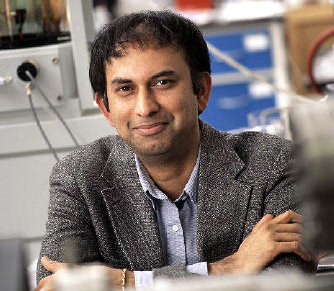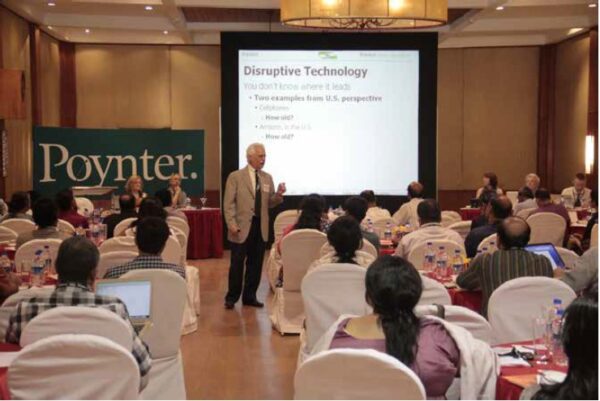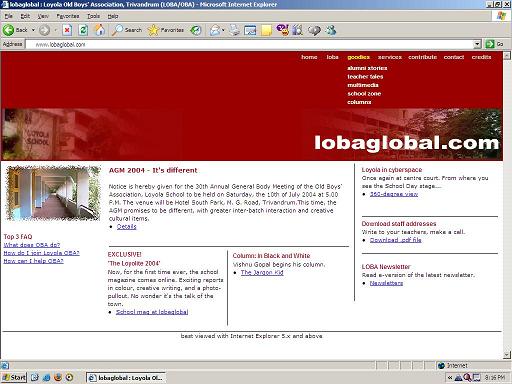Media (Kochi)
We know from footnotes in research papers and books that journalists provide raw material for social science research. Less often formally acknowledged, news items written by journalists help researchers identify research questions or observe patterns in social behaviour. That is why, for example, those who study Kerala politics read newspapers and magazines to keep themselves abreast of developments in their research topics. But what about those who study Kerala journalism—how do they keep track of happenings in Kerala media?
In this desert, unfortunately, the journalistic wells are dry. While journalists write bales about politics, business, and society (ranging from crime to sport) every day, they shy away from reporting news about their own sector—daily, weekly, monthly, or even yearly. Commentaries laced with anecdotes are more common but a poor substitute; they conceal more than they reveal.
This problem can be addressed by the Kerala Media Academy. As a publicly-funded institution interested in promoting a healthy media environment in the state, it is well-positioned to initiate a periodic report on journalism in Kerala. The rationale and scope of an annual report, like the Pew Research Center’s State of the News Media report in the United States, were outlined in an earlier column (‘An Annual Arrival’, September 2013, Media).
If the Academy lacks financial and human resources to immediately launch such fresh initiatives, it must at least refresh its existing publications. To start with, the Academy’s flagship publication—Media—can be rebooted to benefit researchers, even as it simultaneously enhances its usefulness for professional journalists and lay readers.
Rather than convert it into an academic journal with original research papers—a task that calls for a horde of good researchers to write and select good content—Media magazine would be more useful to Kerala media researchers if the journalist-run magazine shifted gears to the next level and carried out good journalism about journalism in the state.
In its current avatar, the magazine does not give a flavour of contemporary Kerala journalism. I suspect that the sustained, prominent coverage to international and national issues in these pages is due to two reasons.
First, there is a genuine desire on the part of the Academy and the journalists at the helm to draw the attention of the magazine’s target reader category—journalists in Kerala—to the important national and global issues in journalism.
Second, the idealism embedded in such a desire to raise awareness and develop Kerala journalism is, however, not matched by the courage to write honestly, introspectively, and critically, about current practices in Kerala news media. The pervading fear is that flagging any such local concern will antagonise colleagues or the establishment (employers and government). It seems safer therefore, on the theme of Kerala journalism, to rinse the distant past, and line-up an incredible parade of soapy, nostalgic articles.
For how long and to what end do we bury our head in the sand? While discussing the declining credibility of mainstream media outlets, or challenges to free speech, it is insufficient that we pepper our articles with examples from Europe and paper over incidents in Kerala. Similarly, labour issues in media industry, suppression of news due to pressure from advertisers, and the tendency to dish out speculative news are worthy of detailed scrutiny and corrective action. By fashioning itself as a space for bold takes on contemporary journalism in the state, Media magazine can serve as a mirror to Kerala journalism. In doing so, it would help not only researchers, but also journalists and lay readers.
Two Approaches
While pursuing journalism about journalism, there are two traditions that Media magazine can draw upon: media literacy and mediawatch.
‘Media literacy’, according to the US-based educational organisation Center for Media Literacy, ‘is about helping students become competent, critical, and literate in all media forms so that they control the interpretation of what they see or hear rather than let the interpretation control them….Without this fundamental ability, an individual cannot have full dignity as a human person or exercise citizenship in a democratic society where to be a citizen is to both understand and contribute to the debates of the time.’ Interestingly, in the 1970s, it was through a magazine (Media & Values) that the Center for Media Literacy emerged. Similar potential exists for Media to widen the Kerala Media Academy’s field of vision.
In India, from 2009–2010, the media literacy approach has been adopted at the school level, in the media clubs scheme floated by the National Council of Educational Research and Training. But it need not be restricted to schools or students. By regularly furnishing news and statistics about media, critical reasoning, and using other tools, a magazine can empower those who consume news. Even though media literacy initiatives work on news consumers, it can also make news producers, i.e., journalists, conscious of their own work, including biases and ethics.
The second approach, media watch, is familiar to journalists and researchers in India, through websites such as The Hoot (thehoot.org) and News Laundry (newslaundry.com). They too educate journalists and news consumers, but the tone is that of a media-monitoring critic than an educator. Media watchers spice up their fare with irreverence and sarcasm, as hinted in their taglines (‘sab ki dhulayi’, ‘everyone loves it until they are on it’). At times, they even break stories regarding the news media, especially unethical practices.
In Kerala, there are no media watch initiatives like Fairness & Accuracy In Reporting in the United States or Media Lens in the United Kingdom. The Media Watch programme in Australia (ABC channel) is a good example of this genre on television. Unlike the iconic ‘Vaaraanthyam’ and its cousins on Malayalam TV channels—which are news review programmes, and not really media watch programmes—the Australian programme maturely discusses media practices in informative and entertaining fashion.
Between the two approaches, at least in tone, Media magazine has thus far been moulding itself closer to media literacy. Continuing to treat contemporary Kerala journalism as a blind spot, however, runs counter to the spirit of media literacy.
So, going ahead, Media magazine should consider offering a healthy mix of the two approaches, and like Poynter (poynter.org), devote greater attention to how it offers the content online. Such an editorial strategy would also widen the appeal of the magazine. Rather than being of interest only to professional journalists, the magazine can reach out to news consumers. Once buyers and readers of newspapers and newsmagazines enjoy access to a journalist-run magazine about journalism, their ability to evaluate and consume news will grow in a healthy way. By publishing articles that adhere to principles of journalism, the Academy too would be setting an example to the journalist fraternity and rekindling hope among consumers.




